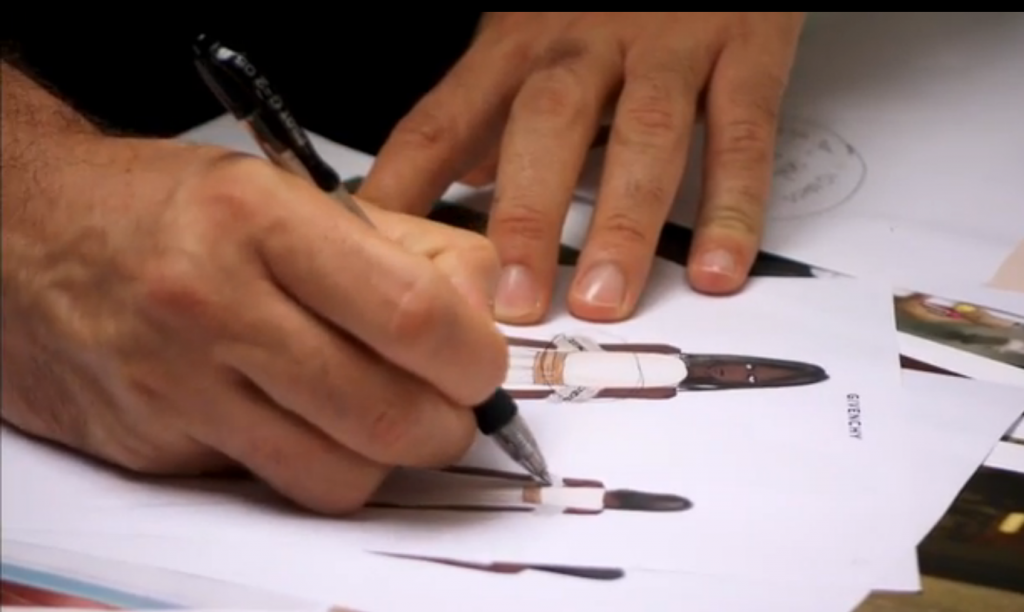Shantavia Beale II
Process

Kehinde Wiley: An Economy of Grace (video stills), 2014, video, 38:00 min., courtesy of Show of Force. © Public Broadcasting Service (PBS).
In traditional formal portraiture, the sitters’ clothes and finery were selected with the greatest care to communicate their status. Often new clothes were made for the sole purpose of a portrait, especially if it was a particular occasion or commemorative event. Given this history, it is fitting that Kehinde Wiley would embark on a project that incorporated contemporary couture fashion. In his series An Economy of Grace—the first body of work that centers on the female figure—Wiley collaborated with fashion designer Riccardo Tisci at the French couture firm Givenchy.
Kehinde Wiley describes collaborating with Riccardo Tisci in an 2014 FLARE interview:
For your 2012 exhibit featured in the film, An Economy of Grace, you had Riccardo Tisci custom make the dresses for your sittings. What inspired this particular collaboration?
We had a number of conversations about the history of art—we walked through The Louvre together, he would send me drawings and ideas with notes. He loves fashion history and he knows it in such an encyclopedic way that it was interesting to get to talk about not only how a fabric lies on the body, but the ways that that fabric has been used in different time periods and how it connotes a different type of elegance, class and status.
Your images of women came from carefully constructed photos—the dresses, hairstyles, make-up. Was there a particular reason that you didn’t picture them in their street clothes, as you most often do with men?
I wanted “An Economy of Grace” to feature another way to look at clothing, another function. It goes back to the question of armor, class and status—everything was very calculated. As opposed to just talking about the exclusive nature of the clothing in historical art, I had to find the most exclusive couture house and work with Riccardo Tisci. It becomes so unthinkably special for each one of the women involved in the project that it was a much better example of the history that we were quoting.

